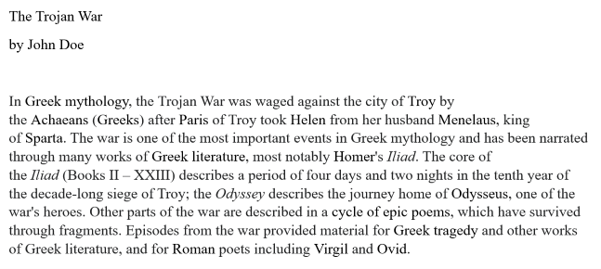Copywriting 101
- Course Introduction
- Understanding Your Audience
- Writing Effective Headlines and Taglines
- Crafting Persuasive Body Copy
- Writing for Different Mediums
- SEO and Content Marketing Writing
- Legal and Ethical Considerations
- The Revision Process
- Building a Portfolio
- Real-world Applications
- Integration and Application (Extra time for Project Completion)
Legal and Ethical Considerations
Avoiding Plagiarism and Misinformation in Copywriting

Using another author's work as if it was one's own original work.
In the world of copywriting, originality and accuracy are paramount. This article will delve into two critical aspects that every copywriter must be aware of: plagiarism and misinformation. We will explore what they are, why they matter, and how to avoid them.
Understanding Plagiarism
Plagiarism is the act of using someone else's work without giving them due credit, making it seem as if it is your own. This can be a direct copy-paste of text, paraphrasing without citation, or even stealing ideas. Plagiarism is not only unethical but also illegal, leading to severe consequences such as legal action, damage to reputation, and loss of trust.
Types of Plagiarism
There are several types of plagiarism, including:
- Direct Plagiarism: Copying someone else's work word for word without providing credit.
- Mosaic Plagiarism: Mixing copied words or phrases into your own writing without citation.
- Accidental Plagiarism: Unintentionally failing to cite or misquoting sources.
- Self Plagiarism: Reusing your own previously published work without citation.
Techniques to Avoid Plagiarism
Avoiding plagiarism requires diligence and a commitment to integrity. Here are some techniques to help you steer clear of plagiarism:
- Cite Your Sources: Whenever you use someone else's ideas or words, make sure to give them credit.
- Paraphrase Properly: When you put information into your own words, ensure it's not too close to the original text, and always cite the source.
- Use Plagiarism Checkers: There are numerous online tools available that can help detect plagiarism in your work.
The Impact of Misinformation
Misinformation refers to false or inaccurate information, regardless of intention. In copywriting, spreading misinformation can harm your credibility, damage your client's reputation, and even lead to legal repercussions.
Fact-Checking and Verifying Information Sources
To avoid spreading misinformation, it's crucial to fact-check your work and verify your sources. Here are some tips:
- Use Reliable Sources: Always gather information from credible, authoritative sources.
- Cross-Verify Information: Don't rely on a single source; cross-check facts with multiple sources.
- Stay Updated: Information changes over time. Make sure your references are current and up-to-date.
In conclusion, maintaining originality and accuracy in your work is crucial in copywriting. By understanding and avoiding plagiarism and misinformation, you can uphold your professional integrity, build trust with your clients, and deliver high-quality, reliable content.